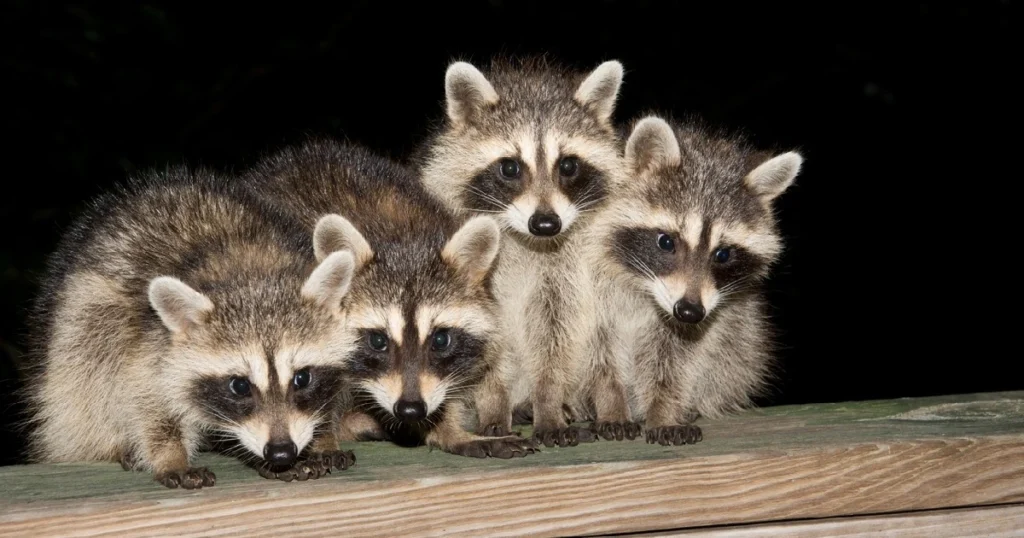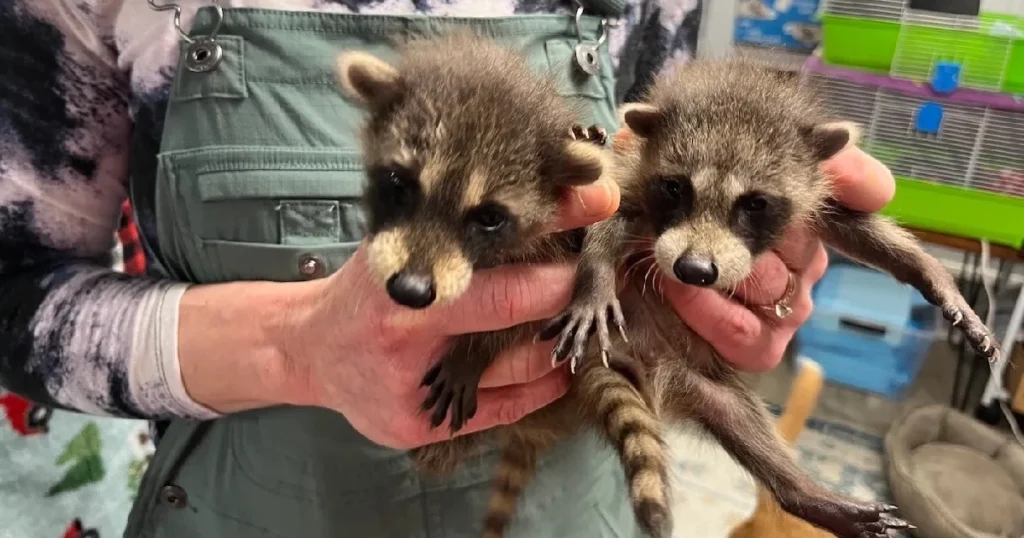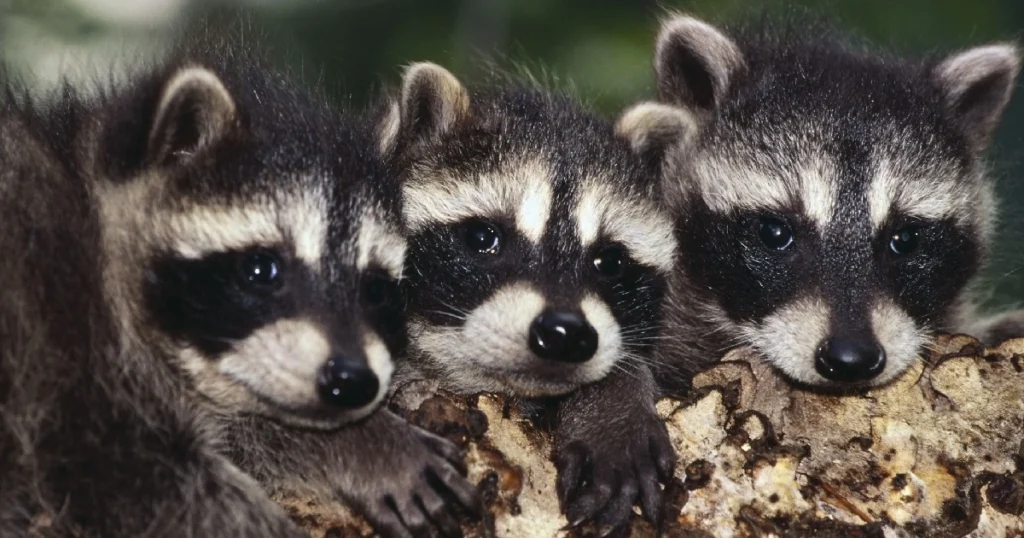
Few creatures in the enchanting realm of wildlife capture our hearts as effortlessly as baby raccoons. These adorable masked bandits have earned a special place in our affection, but there's so much more to them than meets the eye. Join us on a journey into the world of these little rascals, where we uncover fascinating baby raccoon facts, dispel myths, and explore the wonders of nature's miniature marauders.
Baby raccoons, scientifically known as Procyon lotor, are native to North America. Their habitat spans diverse environments, including forests, marshes, and urban areas. These adaptable creatures are equally at home in the wild and in human-populated spaces, showcasing their remarkable ability to thrive in various landscapes.
If you wonder when baby raccoons are born, their usual cycle runs from the late weeks of February through the early weeks of July. Their gestation period lasts approximately 60 days, and the mother gives birth to three to four kits.

At birth, baby raccoons are incredibly vulnerable, weighing just a few ounces and measuring a mere few inches in length. However, they grow rapidly, with their signature black mask and ringed tail emerging within a few weeks. Their distinct markings serve as camouflage and a means of communication within their social groups. If you wonder how big are baby raccoons, they usually grow up to ten inches, weighing around 1 to 1.5 pounds. Anything past that is no longer a baby.
Baby raccoons are opportunistic omnivores, consuming a wide array of foods to sustain themselves. While they primarily feed on fruits, nuts, and insects, they are not averse to scavenging for leftovers in urban areas. As they mature, they become proficient hunters, preying on small animals such as frogs, fish, and rodents. If you wonder how long do baby raccoons nurse, they are usually fed by the mother for eight weeks. After that period, they have to fend for themselves.
Social creatures by nature, baby raccoons form close-knit family units led by a female known as a sow. These groups, called nurseries, provide support and protection for the young until they are old enough to fend for themselves.
Through playful interactions and grooming rituals, baby raccoons develop essential social skills to serve them throughout their lives. If you’re picturing yourself having baby raccoons pets, keep in mind this animal has a whole set of grooming rules that are very different from the usual animals you keep at home.
Baby raccoons are born in litter, typically ranging from two to five offspring. After a gestation period of approximately 63 days, the newborns enter the world blind and deaf, relying solely on their mother for care and nourishment. As they grow, they undergo a remarkable transformation, eventually leaving the den to explore their surroundings and establish their independence.

Baby raccoons exhibit remarkable adaptability, allowing them to thrive in various environments. Whether nestled in the branches of a forest canopy or rummaging through urban garbage bins, these resourceful creatures demonstrate an innate ability to find sustenance and shelter. Their keen sense of smell and dexterous paws enable them to locate and manipulate food items with remarkable precision, showcasing their intelligence and problem-solving abilities.
Communication plays a crucial role in the social dynamics of baby raccoons. While they are primarily nocturnal creatures, their distinctive vocalizations can often be heard echoing through the night. From chirps and purrs to growls and chitters, each sound serves a specific purpose, whether it's signaling danger, expressing affection, or coordinating group activities. Through these vocal exchanges, baby raccoons form bonds with their family members and navigate the complexities of their environment.
As integral members of their ecosystems, baby raccoons play a vital role in maintaining ecological balance. By controlling populations of small rodents and insects, they help regulate food webs and prevent the spread of disease. Additionally, their foraging behaviors contribute to seed dispersal, aiding plant species' growth and regeneration. As stewards of the natural world, baby raccoons embody the interconnectedness of all living things and highlight the importance of biodiversity conservation.
Ethical considerations must guide our actions When dealing with wildlife intrusions, particularly those involving baby raccoons. Relocating these adorable creatures is a matter of legal compliance and a reflection of our commitment to preserving biodiversity and promoting coexistence. Here are seven compelling reasons why relocating baby raccoons is both the ethical and lawful thing to do.

Baby raccoons possess undeniable charm and charisma, enough to make taking care of baby raccoons sound tempting. However, their close proximity to human habitats can sometimes lead to conflicts. As opportunistic feeders, they may raid garbage cans, damage property, or even take up residence in attics and crawl spaces.
Despite their mischievous antics, it's essential to approach these interactions with empathy and understanding. We can minimize conflicts and foster harmonious coexistence with our furry neighbors through proactive measures such as securing trash bins and employing humane deterrents.
For those encountering baby raccoon intrusions on their property, seeking professional assistance is crucial. Critter Stop, a professional humane wildlife removal company, offers expert services to address wildlife conflicts safely and effectively.
Critter Stop has a fantastic reputation, and customer reviews online because it provides high-quality work and great customer service. By enlisting the expertise of Critter Stop, property owners can ensure the humane removal and relocation of baby raccoons, preserving both the integrity of their property and the well-being of these captivating creatures.
If you want to remove those baby raccoons from your property, just give us a call at (214) 234-2616 for a free inspection. We'll take a look at your issue and deal with it properly in the most humane way possible. Our pest control experts have the knowledge and the technology to carry out the task flawlessly.
Baby raccoons hold a special place in the hearts and minds of people around the world, inspiring a rich tapestry of folklore, literature, and art. From Native American legends to modern-day children's stories, they symbolize resilience, curiosity, and the enduring bond between humans and nature. Their iconic black mask and ringed tail have become enduring symbols of wilderness and adventure, capturing the imagination of generations past and present.
In conclusion, baby raccoons are extraordinary creatures that embody the wonders of the natural world. From their humble beginnings in the den to their playful antics in urban parks, they remind us of the beauty and complexity of life on Earth. By embracing their presence with reverence and respect, we can forge a deeper connection to the world around us and embark on a journey of discovery and appreciation for all living beings.
Visit our Critter Library and learn more about our furry friends